Shou Sugi Ban is a unique wood finishing and preservation technique using the traditional Japanese woodworking technique of burning. This special technique increases the durability of wood and adds an aesthetic texture and unique character to it. This method, which has been used for centuries in Japan, has become a trend in architecture and interior design in recent years and has begun to attract attention. Let's take a closer look at the origin and technique of Shou Sugi Ban!
The origins of Shou Sugi Ban, also known as Yakisugi, are unclear. It is believed that wood burning began in the shipbuilding industry in Japan and was transferred to building construction. In residential buildings, it is used as exterior cladding by combining it with white plaster. Since this mixture increases fire resistance, it was applied to provide fire protection in structures used for different functions such as rice storage on farms. Although this method remained popular until the 1950s, when cheaper alternatives began to appear on the market, it has regained its popularity around the world, especially in the last 20 years.
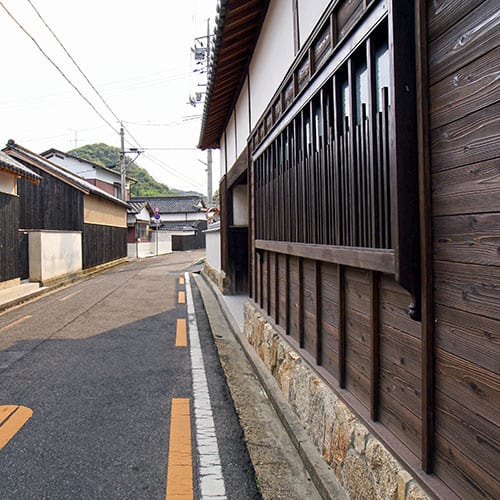
Traditional Shou Sugi Ban
How to Make Shou Sugi Ban?
The type of wood used for this technique is usually chosen as cedar. Trees such as cedar and spruce are preferred and made more durable for the processing process. The outer layer of the wood is processed by burning a fire in an oak coal stove or on wooden boards. As the surface of the material is burned, a carbonized layer forms. During the process, temperature and time are controlled and intervention is made in case of a possible situation. The temperature and duration of the process determine how much the wood will carbonize and how its color will be affected. After the combustion process is completed, it is left to cool and when it cools down, the excess carbon is cleaned and removed. Finally, a special oil is applied to protect the surface. These processes increase the durability of the wood and make it long-lasting. It also provides resistance to external effects such as bacteria, insects and moisture on interior and exterior surfaces.
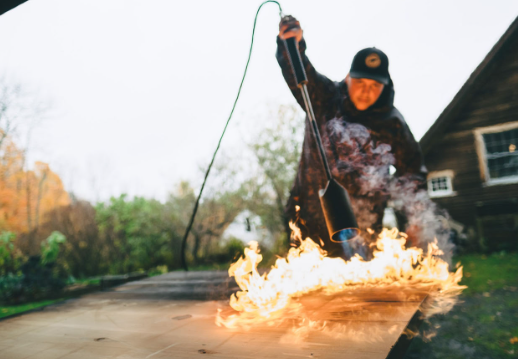
Incineration Process
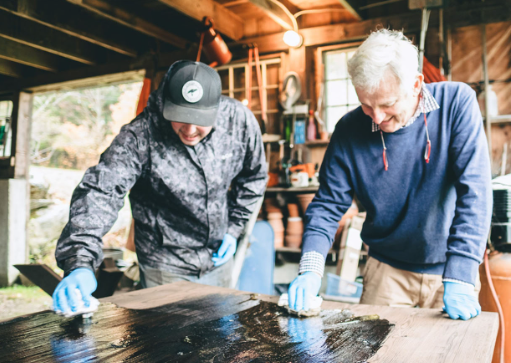
Lubrication Process
Images were quoted from https://www.insaport.com/haberler/geleneksel-bir-japon-teknigi-shou-sugi-ban/.
Shou Sugi Ban offers a wide range of uses indoors and outdoors, being used in applications such as exterior cladding, terraces, fences, furniture and interior wall coverings. While the burnt surface reflects the natural texture and character of the wood, it also offers an original and modern appearance. Wood that has undergone this process does not require maintenance for a long time and is economical. Thanks to the high protection it provides against external factors, it makes wood ideal for use in outdoor projects.
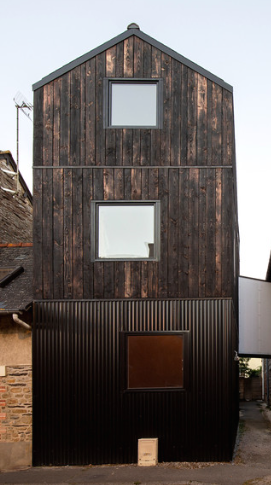

1. Image taken from https://www.archdaily.com/939601/extension-in-burned-wood-shou-sugi-ban-clement-bacle-architecte
2. Image taken from https://kotodesign.co.uk/blog/2017/10/9/shou-sugi-ban-the-art-of-charred-timber.
It is also suitable for use when it is not fully charred. Surface charcoal is removed, revealing the wavy grain of the wood. By keeping the temperature low during the process, the timber grains can be visible.
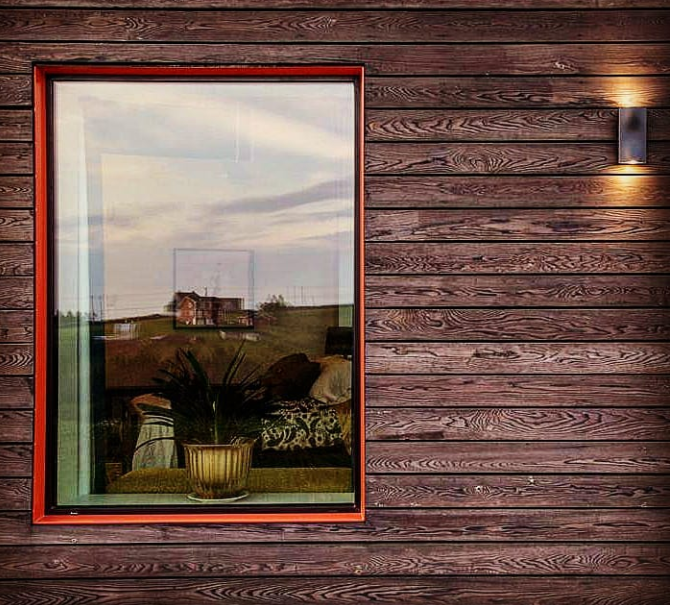
Image taken from https://www.blackwood.nz/post/myth-you-can-do-a-light-char-shou-sugi-ban
Shou Sugi Ban is one of the striking methods that integrates traditional wood burning into modern designs. This method, which has had a great impact on woodworking in the past with its aesthetic appearance, durability and sustainability, continues to shape design trends today.
Don't forget to visit the page to review DENDRO products!
Bibliography:
https://workingtheflame.com/what-is-shou-sugi-ban/
https://www.blackwood.nz/post/myth-you-can-do-a-light-char-shou-sugi-ban
https://www.thespruce.com/what-is-shou-sugi-ban-yakisugi-5119876
https://www.insaport.com/haberler/geleneksel-bir-japon-teknigi-shou-sugi-ban/